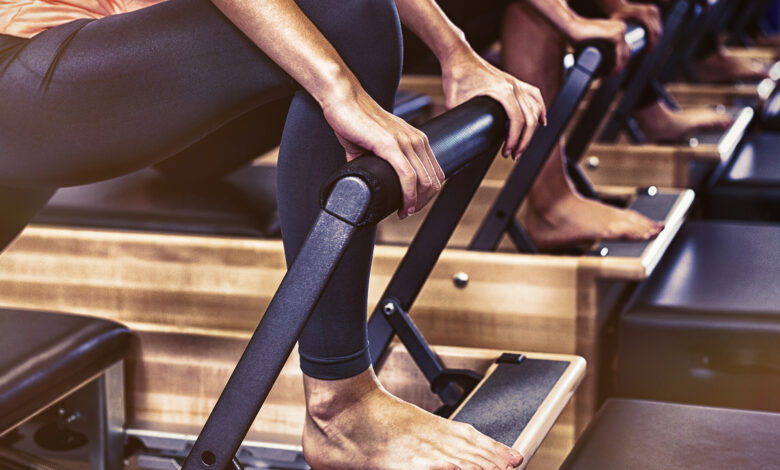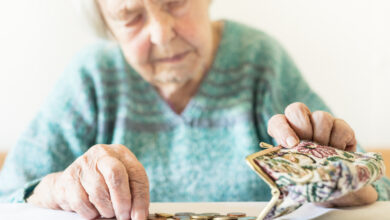EXERCISE IS GOOD FOR WHAT AILS YOU!

PILATES, AEROBICS ALL HELP!
I just saw a study on the effects of exercise on rheumatoid arthritis. Rheumatoid arthritis is a devastating arthritic disease that causes crippling joint deformities. It is accompanied by joint pain, depression, fatigue, poor sleep quality, loss of musculoskeletal function, reduced exercise capacity, and poor quality of life. The authors set out to determine if various forms of exercise affected several lifestyle measures in patients with this disease.
We have known for decades that exercise has a positive effect on most aspects of life, and done in moderation, can increase longevity and improve quality of life. Physical therapy, which has shown positive benefits for most patients, is nothing but a set of exercises designed to alleviate a patient’s specific problem. So we don’t need to be convinced of its benefits.
After seeing that article, I searched the archives of the “medical literature” (scientific medical journals) for other articles that focused on the effect of exercise on other diseases. I found articles that compared various exercise programs on patients with low back pain, breast cancer, obesity, fibromyalgia, total knee replacement, mental health problems, and menopause.
Because each article I found compared the effects of Pilates to various other forms of exercise, I decided to first learn something about this novel approach—What is Pilates? What are it’s principles? What type of exercises are recommended?
Pilates is “a method of exercise” that emphasizes “flexibility, muscular strength, endurance movements, proper posture, core strength, and muscle balance.” It includes “exercises that strengthen the ‘core,’ the muscles of the abdomen, hips, and low back, often called the powerhouse, which improve balance and coordination.” The exercises use either a large “fitness ball” or a specially designed table to improve strength and flexibility which translates to better balance and endurance. Detailed descriptions of specific Pilates exercises are available on the Mayo Clinic website.
In the nine articles I read, exercise programs were studied to see what effect they had on numerous medical parameters. The authors attempted to see what effect various forms of exercise had on joint pain, fatigue, depression, anxiety, sleep quality, muscular strength, functional capacity, and quality of life. All of the studies reached the same basic conclusion: Pilates exercise programs improved most of the medical lifestyle measures previously mentioned when compared to aerobic exercise, yoga, or control groups who did not exercise.
In regard to Rheumatoid Arthritis, Pilates was compared to aerobic exercise and a control (no exercise) group. Depression, fatigue, quality of life, and functional capacity all improved. Only joint pain was unimproved by Pilates.
In Post Menopausal Women, Pilates exercise had “beneficial effects on sleep quality, anxiety, depression, and fatigue.”
For patients who are Overweight or Obese, Pilates, when compared to aerobic exercise, had a “positive impact on the quality of life, depression, and anxiety.”
Compared to Yoga, patients who practiced Pilates showed a significant improvement in functional movement and quality of life when compared to the yoga and control (no exercise) groups.
Pilates intervention also had a positive impact on patients treated for anxiety, depression, and other Mental Health issues. Pilates acts as an adjunct to standard psychiatric therapies so mental health outcomes are improved.
Women with Breast Cancer showed an improvement in exercise capacity as well as functional capacity, flexibility, depression, fatigue, and quality of life.
Low Back Pain is the most common musculoskeletal condition that results in time lost from work. There is good evidence that Pilates is effective for reducing pain and disability of low back pain, but there was no conclusive evidence that it is superior to other forms of exercise.
Recovery times after Total Knee Replacement are far longer than for hip replacement procedures. Patients who rehabilitated using Pilates-based exercises, as well as standard exercise, showed more “improved balance and quality of life than was seen with standard exercise programs alone.”
Fibromyalgia is a unique disorder in which sufferers have pain in multiple “trigger point” areas of the body. Pilates significantly reduced pain in these patients at 12 and 24 weeks after onset of treatment. Fibromyalgia Impact scores, however, were not improved at 24 weeks in either Pilates or regular exercise groups.
Each of these measurements was calculated by scientific scales or indices. Some tests were self-administered while others require independent observers. The Fatigue Severity Scale, Beck Depression Inventory, 6-minute walk test, McGill Pain Questionnaire, Pittsburgh Sleep Quality Index, and Quality of Life Inventories are some of the references used.
Dr. G’s Opinion: Pilates has been around for at least 75 years, but only in recent years has it become a popular practice. Pilates gyms and studios have sprung up all over the country, and its popularity has waxed and waned. It has also long been known that exercise is good for just about any problem. Physical therapy (PT) is, itself, a supervised exercise program. Pilates is an extension of PT that focuses on improving function and strength of abdominal, low back, and hip muscles as well as balance and flexibility.
From the nine articles referenced here, it is obvious that the program has qualities that improve multiple measurable parameters. Any of the several conditions mentioned here were helped by exercise, but those who followed a Pilates program had even greater improvement. I’m impressed with these results, true, but these studies also show that any exercise is better than none at all regardless of the problem. Whatever exercise you choose, you will gain benefit from it. So get up and get moving. Your problem will soon show improvement.
References: https://www.docwirenews.com/abstracts/rheumatology-abstract-Pilates-rheumatoid-arthritis.
Altan L, Korkmaz N, Bingol U, Gunay B. Effect of Pilates training on people with fibromyalgia syndrome: a pilot study. Arch Phys Med Rehab 2009 Dec;90(12):1983-8.
Karaman A, et al. Do Pilates-based exercises following total knee arthroplasty improve postural control and quality of life? Physiother Theory Pract. 2017 Apr;33(4):289-295.
Yamato TP, et al. Pilates for low back pain. Cochrane Database Systolic Rev. 2015 Jul 2;(7):CD010265.
Eyigor S.et al. Effects of Pilates exercises on functional capacity, flexibility, fatigue, depression, and quality of life in female breast cancer patients: a randomized controlled study. Eur J Phys Rehabil Med. 2010 Dec;46(4):481-487.
Aibar-Almazan A, et al. Effects of Pilates training on sleep quality, anxiety, depression, and fatigue in postmenopausal women: a randomized controlled trial. Maturitas Jun ;124:62-67.
Lim EJ, Park JE. The effects of Pilates and yoga participants on engagement in functional movement and individual health level. J Exercise Rehabil 2019 Aug 28;15(4):553-559.
Rayes ABR, et al. The effects of Pilates vs. aerobic training on cardio respiratory fitness, isokinetic muscular strength, body composition, and functional tasks outcomes for individuals who are overweight/obese: a clinical trial. Peer J. 2019 Feb 28;(7): e6022.
Fleming KM, Herring MP. The effects of Pilates on mental health outcomes: A meta-analysis of controlled trials. Complement Ther Med 2018 Apr;37:80-95.
https://www.scielo.br/Scielo.php.
https://www.mayoclinic.org/healthy-lifestyle/fitness/in-depth/pilates-for-beginners.
https://www.self.com/story/5-things-to-know-before-you-take-Pilates-classes.
https://www.mayoclinic.org/healthy-lifestyle/fitness/multimedia/core-strength.




